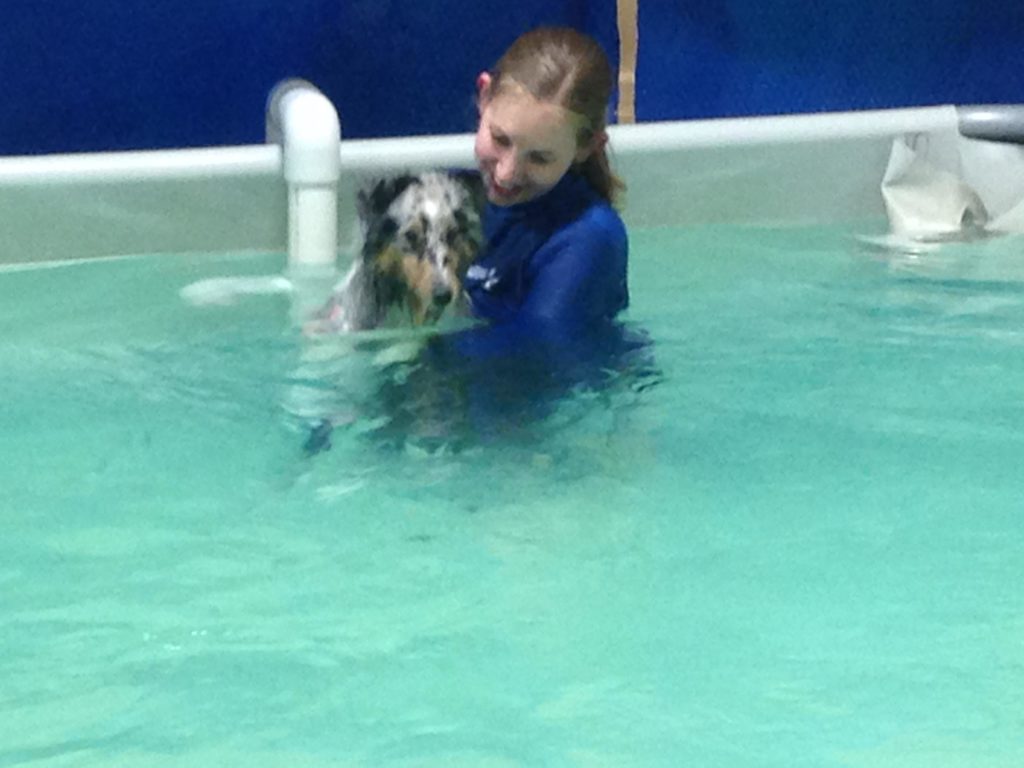
While cats have the reputation for hating water, most dogs do not just run and jump into a body of water either, regardless of their breed.
In some cases, it could be because their only experience with water up to that point has been a bath; if your dog doesn’t like a bath, he may not be eager to get into the water. Others it just might be a fear of something new or a timid nature that just takes awhile for them to try something different.
The good news is, that most dogs can overcome their fear of water and many even get to the point where the like being in the water.
I recently took my Shetland sheepdog pup to his first swimming lesson as a Dogs Gone Swimming, a local doggy pool in Portland, Oregon. A swimming pool with a dog swim coach is the best way to get a new dog used to the water for the following reasons:
- A dog that has never been in the water before is more likely to drown in a river or the ocean the first time out
- The water is warm, so it’s more inviting
- You have a professional who understands dog behavior to help your dog overcome any anxiety
- The pool is set up so your dog can gradually get in, instead of having to jump in all at once
- They will tools such as life jackets, toys, treats, etc., all to help your dog out
All of these are reason why I, even as a dog trainer, took my dog to a pool before we head out on a kayak.
Take it Slow
Jennifer Fish, office manager and dog swim coach at Dog Gone Swimming explained that you want to take it slow and let the dog feel comfortable on their own.
She also noted that you shouldn’t assume your dog will or will not like the water based on his breed.
“We have Labs that come in that can’t swim at all, and don’t want to,” she said.
Step 1
We started by having her give him a couple treats out of the pool and allowed him to meet her. This is important if your dog is shy, like mine is, so he will feel more comfortable with her in the water.
Step 2
Then, get some treats and get in the water yourself. If you are using a kiddy pool in the backyard (a good second choice if you do not have access to a doggy pool), put something in the water that can act as a ramp for your dog, so he doesn’t have to jump in – a board with a brick under it works for most dogs.
Reward your dog with a treat any time he comes near the water.
It’s okay if they take the treat and then run back a bit. This is normal dog before when they aren’t sure of something.
TIP: If your dog is more toy-driven, you can also use toys. Try rolling a ball down the ramp for your dog to follow.
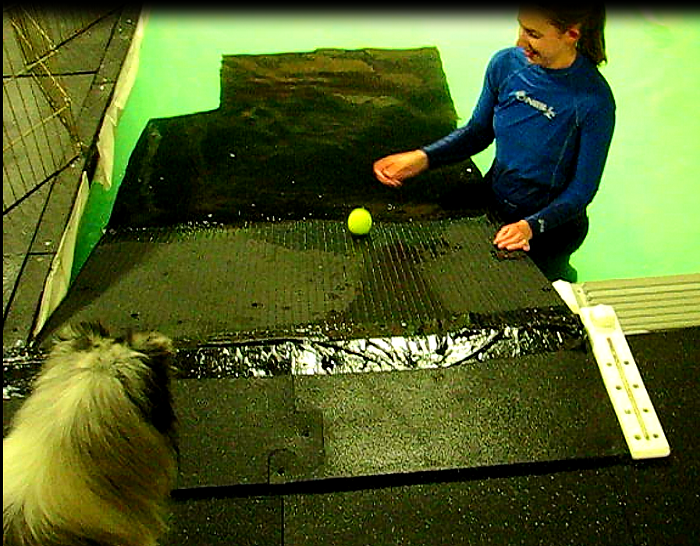
Step 3
Once your dog is coming all the way to the water’s edge and seems relatively comfortable, two things will happen depending on your dog.
- He will just jump in now that he has gotten that far
- You will have to help him in
We did the second with my dog Merlin. He would go the edge, but just wasn’t ready to take the plunge, partly because of the stranger element. So, once he was on the ramp, I gently put my arm around him and handed him off to Fish, who slowly lowered him in the water.
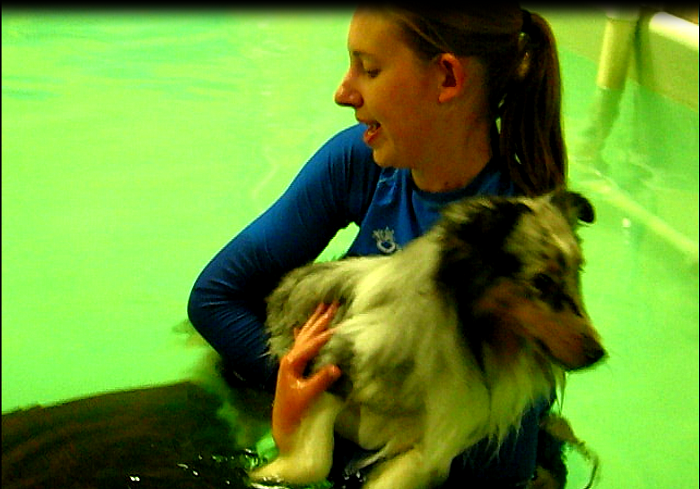
IMPORTANT: Be sure, at this point, you are fully supporting your dog’s head and back about the water. Dog’s do not swim naturally and your dog may sink like a rock if you just let go!
Step 4
Keeping one hand under your dog’s front legs (this keeps his head up), use your other hand to keep his shoulders down (also helps keep the head up.)
After a few seconds, take them back the ramp so they know that’s the escape – it’s important your dog know how to get out of the water. Give them a few treats for being so brave!
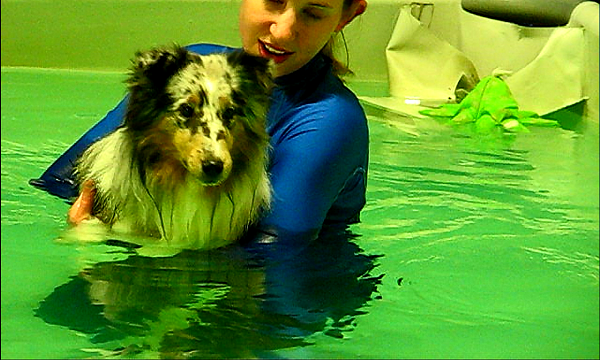
Step 5
Repeat taking your dog out into the water. Do this a few times and then give him a break.
Tip: Using a life jacket can make your dog feel more secure and is definitely a must in open water. Fish recommends the Ruff Wear Float Coat.
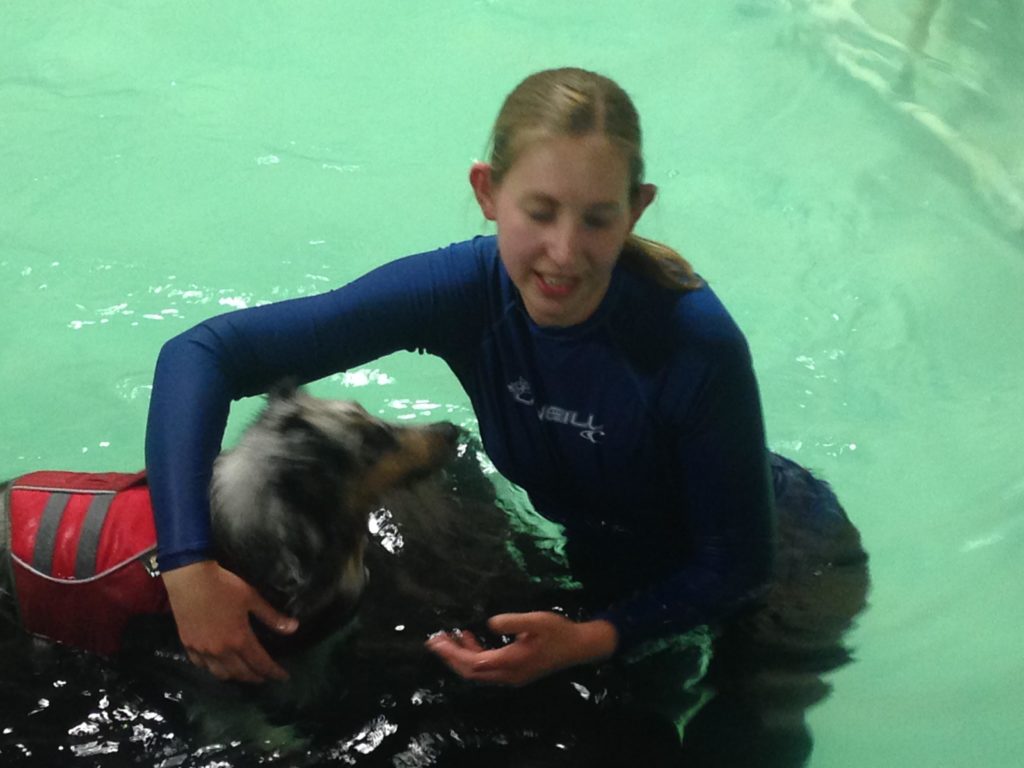
Kiddy Pool Advantages
Another advantage to a kiddy pool is you could go about this in a different way altogether. Start by filling the kiddy pool with just an inch or two of water and see if your pup (using the method outlined above) will go in.
Once your dog is playing in that amount of water, you can gradually add more. Just be sure that if you have a small enough dog to swim in a pool that size, that when the water gets high enough, you are there to hold them until they are swimming on their own.
